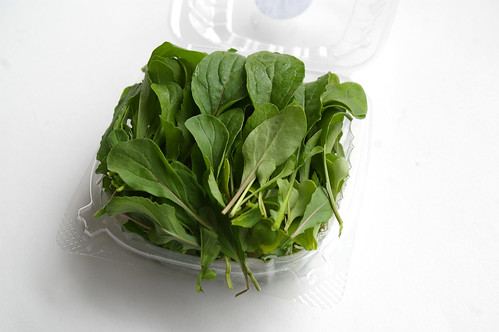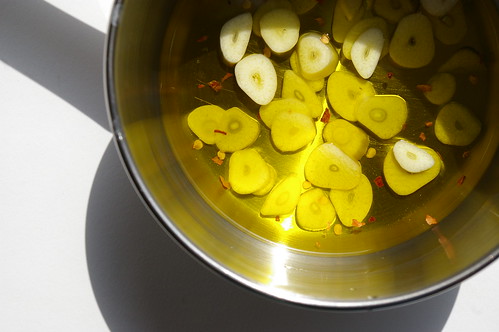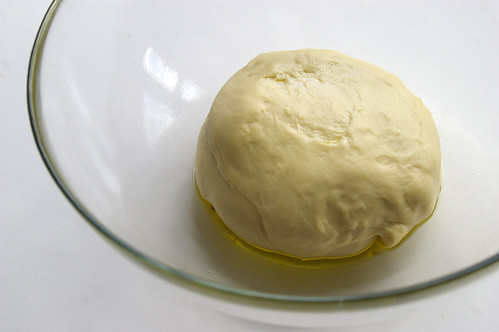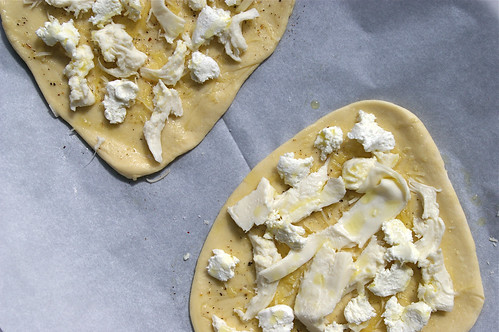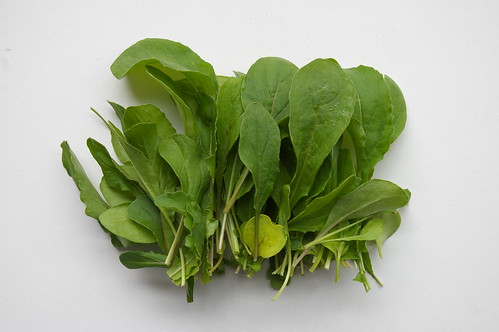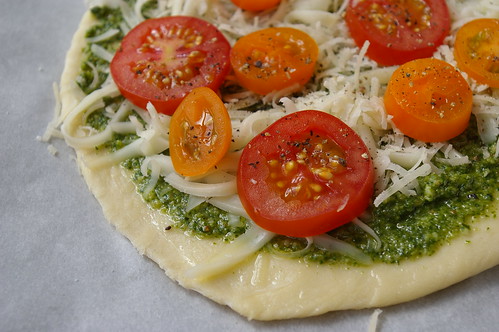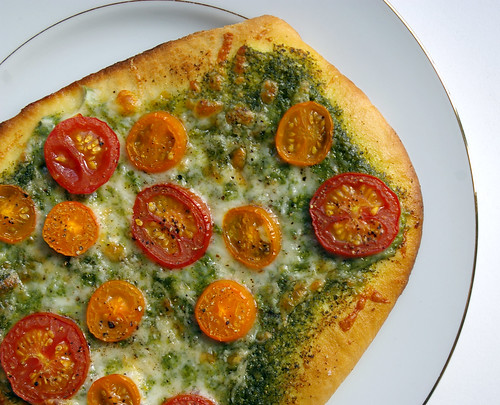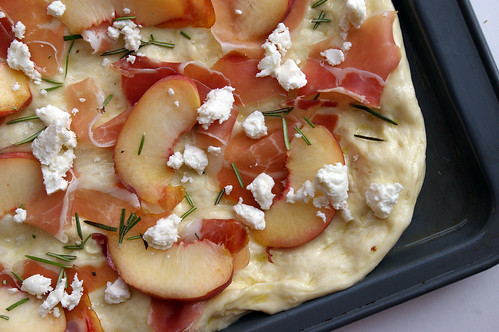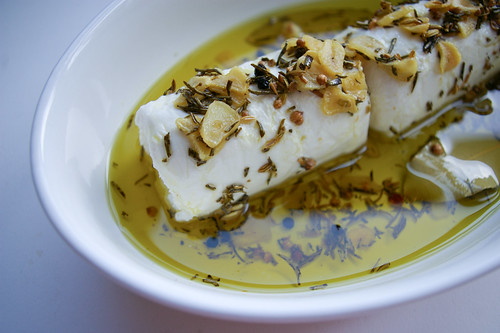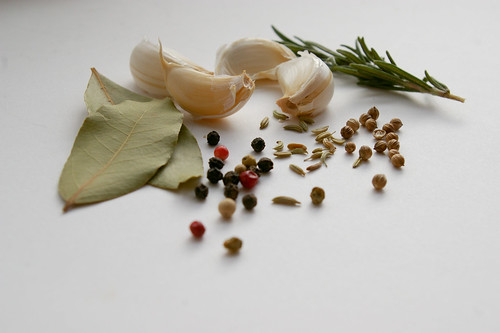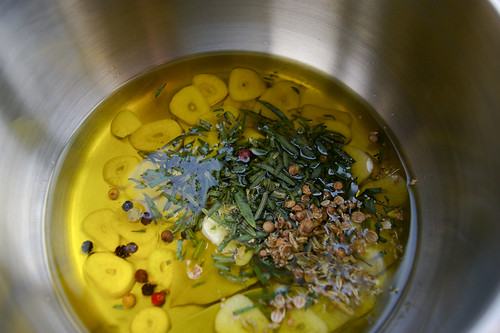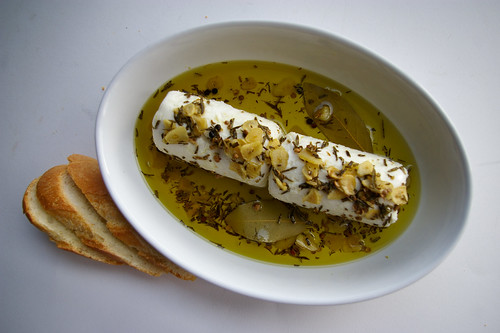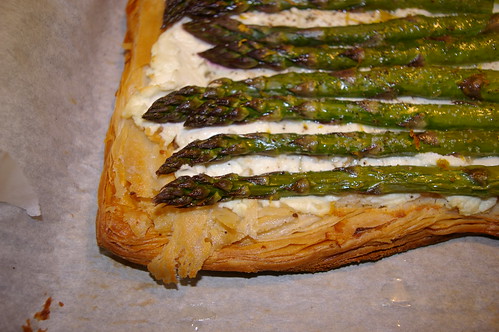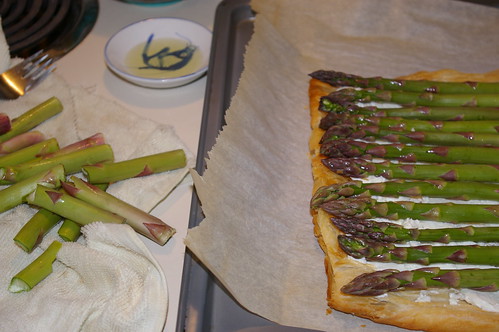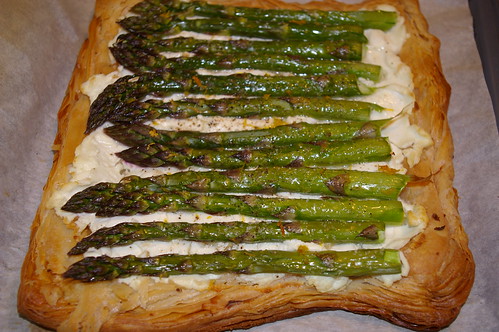That’s slush outside right now. Melting snow and ice are forming rivulets that wend their way along curbs, searching out drains, forming murky puddles. Patches of grass left exposed are at last revealed, mats of brown carpeting the landscape.
It’s that shoulder season between winter’s end and the birth of spring when everything is dirt-covered, mottled from months of being hidden under cold and damp and snow.
So, until those pops of green start to stand out in relief against the landscape, until those buds burst out along tree branches and from the once-frozen ground, the next best thing, as far as I’m concerned, is to eat like spring is already here.
It’s time to shed the stews and soups of winter comfort and embrace herbs, baby lettuces, tender chard, pencil-thin stalks of asparagus and peppery arugula.
Well, in my kitchen at least.
There was something about this recipe for White Pizzas with Arugula that caught my eye at one point as I flipped through the Barefoot Contessa’s Back to Basics cookbook ages ago.
I like a good traditional pizza. And some of you may remember a version I did last year topped with shaved asparagus.
But this one appealed because I like the idea of garlic and cheese matched with an arugula salad that had been tossed in a lemon vinaigrette. It was like a salad and main dish combined to make something even better.
Arugula, which is also known as rocket, has a nice pepper bite to it, owed, apparently, to being a relative to radishes and watercress.
The lemon would add a nice bright kick, but the melted cheeses – Fontina, mozzarella and goat cheese – would lay a decadent foundation on the pizzas.
Oh, and garlic-infused olive oil? Well, that would take the whole thing over the edge.
The only thing that could have stood in my way was attempting to knead dough (a task that remains my culinary nemesis for now), but Ina Garten’s recipe calls for pretty much the entire thing to be done in a stand mixer.
Sold.
The pizzas are simple to put together and came out of the oven crisp, the cheese just starting to change to a soft golden colour. Topped with the arugula, they’re a food metaphor for the changing season: bright green emerging from white.
And the taste was a marriage between the comfort food of winter and the emerging flavours of spring: the peppery arugula and acidic zing of lemon vinaigrette played well against the rich pizza with its creamy cheeses and garlicky oil.
Don’t be intimidated by the rather lengthy recipe; it’s all pretty straightforward. And the result is worth it. Because even if this isn’t the last we see of winter -and, judging from the last several years here, I suspect it’s not – I can at least taste spring.
White Pizzas with Arugula
This recipe comes from The Barefoot Contessa Back to Basics. To make all at six pizzas at once, you will need three parchment-lined sheet pans. But this recipe is easily halved if you want. She also calls for a few sprigs of thyme to steep in the olive oil with the garlic, but I didn’t have any on hand and I don’t think I missed out by not adding it.
I’ve found arugula at Lina’s Italian Market, at the farmer’s market and sometimes in clamshell-type packages at major grocery stores.
Pizza:
- 1¼ cups (300 mL) warm water, 100?F to 110?F (38?C to 43?C)
- 4½ tsp (22 mL) dry yeast
- 1 tbsp (15 mL) honey
- olive oil
- 4 cups (1 L) all-purpose flour, plus extra for kneading
- salt
- 4 garlic cloves, sliced
- 1/4 tsp (1 mL) crushed red pepper flakes
- freshly ground pepper
- 3 cups (750 mL) grated Italian Fontina
- 1½ cups (475 mL) grated fresh mozzarella
- 11 oz (300 g) creamy goat cheese
Salad:
- 1/2 cup (125 mL) olive oil
- 1/4 cup (50 mL) freshly squeezed lemon juice
- 8 oz (250 g) baby arugula
For the dough, combine the water, yeast, honey and 3 tbsp (50 mL) olive oil in the bowl of an electric mixer fitted with a dough hook. When the yeast is dissolved, add 3 cups (750 mL) flour, then 2 tsp (10 mL) salt, and mix on medium-low speed. While mixing, add up to 1 more cup (250 mL) flour, or just enough to make a soft dough.
Knead the dough for about 10 minutes until smooth, sprinkling it with the flour as necessary to keep it from sticking to the bowl. When the dough is ready, turn it out onto a floured board and knead by hand a dozen times. It should be smooth and elastic. Place the dough in a well-oiled bowl and turn it to cover it lightly with oil.
Cover the bowl with a kitchen towel and allow the dough to rise at room temperature for 30 minutes.
Meanwhile, make the garlic oil. Place ½ cup (125 mL) oil, the garlic and red pepper flakes in a small saucepan and bring to a simmer over low heat. Cook for 10 minutes, making sure the garlic doesn’t burn.
Preheat the oven to 500F (260C). Dump the dough onto a board and divide into 6 equal pieces. Place them on a sheet pan lined with parchment paper and cover them with a damp towel. Allow the dough to rest for 10 minutes. Use immediately, or refrigerate for up to 4 hours.
Press and stretch each ball into an 8-inch (20cm) circle and place 2 circles on each parchment-lined sheet pan. (If you’ve chilled the dough, take it out of the refrigerator approximately 30 minutes ahead to let it come to room temperature.) Brush the pizzas with the garlic oil, and sprinkle each one liberally with salt and pepper.
Sprinkle the pizzas evenly with Fontina, mozzarella and goat cheese. Drizzle each pizza with 1 tbsp (15 mL) more of the garlic oil and bake for 10 to 15 minutes, until the crusts are crisp and the cheeses begin to brown.
Meanwhile, for the vinaigrette, whisk together ½ cup (125 mL) oil, the lemon juice, 1 tsp (5 mL) salt, and ½ tsp (2 mL) pepper. When the pizzas are done, place the arugula in a large bowl and toss with just enough lemon vinaigrette to moisten. Place a large bunch of arugula on each pizza and serve immediately.
Makes 6 pizzas.
This originally ran in the Calgary Herald. For more recipes, check out the Herald’s online food section.
Bonus pizza: Homemade pesto topped with tomatoes.

